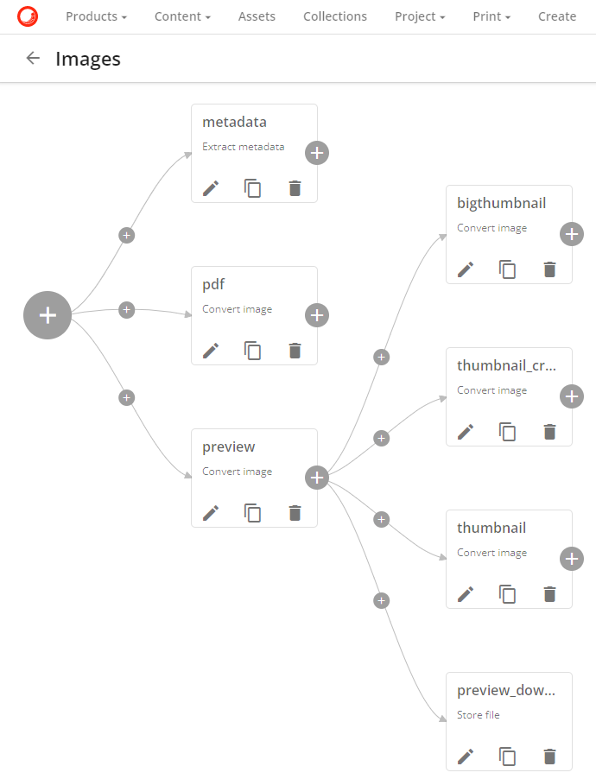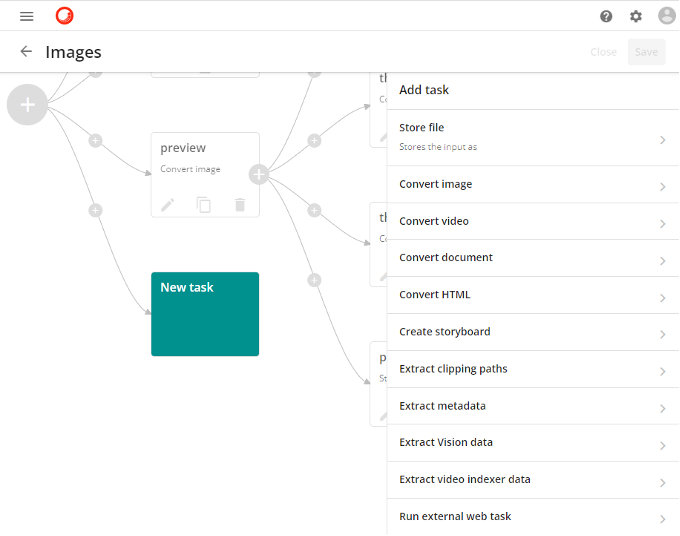Content Hub’s Media Processing features strongly support Sitecore’s claim for being the best in breed DAM solution. Also enabling this claim beyond being just a DAM via its ability to enrich entity data for Content Marketing Platform (CMP) and Product Content Management (PCM) capabilities as assets are ingested.
Assets are grouped by file type to enable administrators to create different processing flows for different media types. Powerful features such as using Artificial Intelligence to analyse images and videos to tag content with taxonomy metadata that suits their purpose and saves countless hours of manual, error prone content entry and analysis.
The topics covered are as follows:
· Media Processing Flows
· Processing Options Out of the Box
Media Processing flow
Following the Media Processing panel from the Manage dashboard leads to the screen shown below. Here it is possible to see the different flows that are configured for the various file extensions in a business user friendly format.
· Configuration in UI – No Development Required

Clicking on to the Content section we see Flows for Images and Videos file extensions alongside various others. Clicking the on Images shows the Flow configured for the various image file extensions.

Processing Options Out of the Box
Flow tasks can be chained where one task depends on the output of another. Examples include scenarios such as Composite Assets (Zip files) which may be processed and subsequent steps in the Flow processing the unzipped files.
Chaining of tasks can also be useful where best practice dictates a performance benefit of doing so, for example when resizing an image from a large size to medium, small, and smallest sizes there can be a performance benefit by using the initially resized medium rendition to create the small, then in turn using the small to make the smallest.
NB: Processing can create a new rendition of the same asset, or in cases such as where the file is converted to a different extension a separate asset altogether can be created.
Some example requirements that can be satisfied without custom development are as follows:
- Convert image types and sizes
- Convert video types and duration
- Crop images around custom focal points
- Change PDF resolution
- Extract metadata such as parameters from file name using specific syntax for naming
- Configurable Vision Service tasks – E.g. OCR identifies text in images for metadata
- Call external systems as required
- Various connectors provided by Sitecore – E.g. Adobe Cloud, InVision, and many more

Configuration in UI – No Development Required
Tasks can be configured by clicking on them, or at time of creation when clicking one of the plus symbols as appropriate. Some of simple configuration options include:
- Target extensions
- Resizing parameters
- Specify image focal points
- Specify composite asset (zip file) outputs/storage
- Metadata processing configuration
- Configure custom endpoints
- Limit AI processing to specified types

Such functionality enables the configuration of complex tasks in a No-Code format. Administrators can also consume custom tasks built by in-house developers in this user-friendly drag and drop tool. This scenario could be considered Low-Code. Part 2 elaborates further on automation concepts which require developer input, with specific attention given to Triggers, Actions, and Scripts.
Another amazing feature which comes out of the box is the Artificial Intelligence processing of images and videos. However, this is a blog in itself Sitecore Content Hub – Media Processing Automation (Part 3, Codeless AI) which can read here.
The purpose of part 1 has been to highlight configurable features that do not necessitate developer knowledge which we’ve shown to go a long way towards most business requirements. One of many reasons which makes Content Hub exceptional value and a key marketing tool. More reasons can be seen in Sitecore’s whitepaper “The case for a marketing Content Hub” which can be found here (https://www.sitecore.com/landing/corp/content-crisis/the-case-for-a-content-hub).
Continue reading Part 2 Sitecore Content Hub – Media Processing Automation: Part 2 - Low-Code for how customised automated processing of assets with limited developer input.



